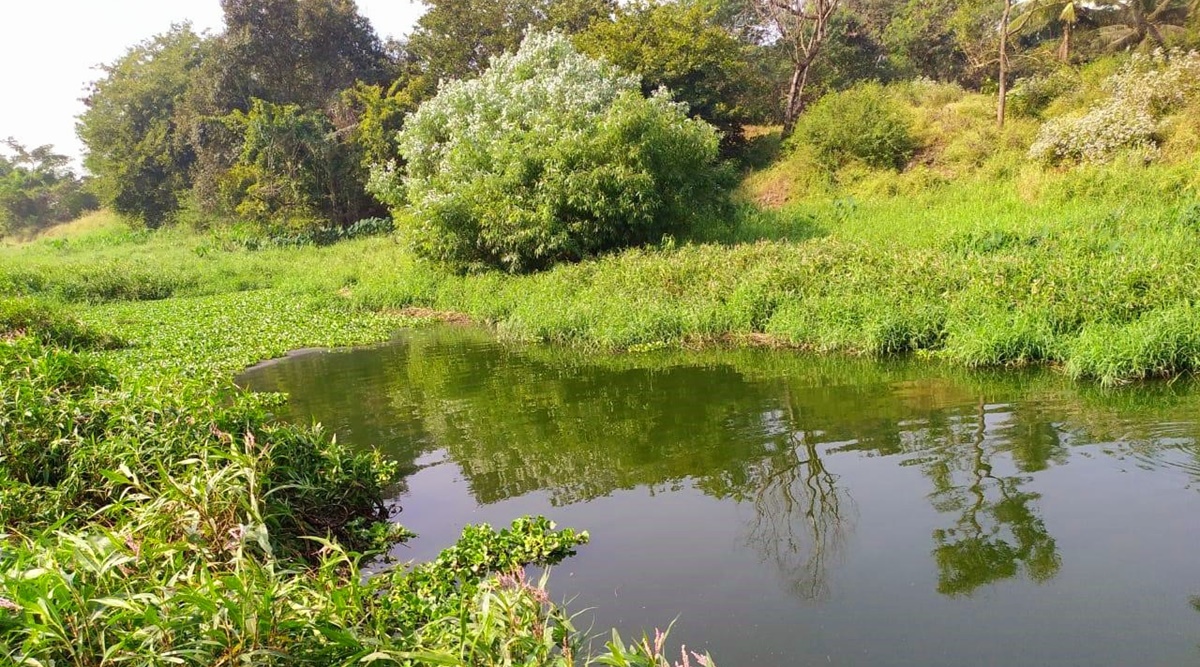 Researchers have identified 64 species of freshwater invertebrate organisms along Mutha river at Vitthalwadi and 70 species at Mula-Ram confluence. (Express photo)
Researchers have identified 64 species of freshwater invertebrate organisms along Mutha river at Vitthalwadi and 70 species at Mula-Ram confluence. (Express photo) The first impression of Mula-Mutha running through Pune city and Pimpri-Chinchwad is that of a carpet spread of water hyacinth, floating plastics and floral remains, stagnant and stinking water. These rivers, however, are still home to over 60 species of freshwater invertebrates, a collaborative study has found.
Researchers have identified 64 species of freshwater invertebrate organisms along Mutha river at Vitthalwadi and 70 species at Mula-Ram confluence.
The study has been conducted by Biologia Life Science, Pune-based NGO Jeevitnadi Living River Foundation, and Modern College of Arts, Commerce and Science.
Despite high levels of pollution and rampant sand mining at these sites along with threat to habitat destruction, researchers argue that the one-kilometre stretch each of Mutha river at Vitthalwadi and Mula-Ram confluence near Aundh-Baner Link Road, have rich biodiversity. The foundation has adopted these stretches, where it conducts weekly cleaning activities along with local residents.
“We must first know what organisms are thriving in these freshwater bodies so as to plan efforts towards their conservation,” said Yugandhar Shinde, assistant professor at the department of zoology at Modern College.
The group collected samples from rock pools and wetlands found along these river banks during their field study between November 2020 and January 2021.
The group identified Pettancylus tenuis, a freshwater gastropod measuring 2.5 mm to 3 mm in length, along the Mula-Ram confluence. Gastropods are shelled invertebrates, similar to snails. Pettancylus tenuis have earlier been recorded in parts of Kerala and Tamil Nadu.
“The stretch under observation at the Mula-Ram confluence is relatively less polluted,” Shinde added.
With the PMC now speeding up river front development and beautification plans along these rivers, researchers said there was a need to undertake dedicated field studies, which will not only help document all life forms but also act as a guide while planning conservation.
They added that any disturbance to natural habitat will wipe out the existence of even smaller living organisms from the region.
“Wetlands and freshwater ecosystems remain neglected and studies have often focused on identifying larger living organisms. But we must identify and document even smaller organisms and protect their habitats. Such studies will also contribute in the planning of conservation measures needed to protect urban water bodies,” said Kirti Amritkar-Wani, another collaborator associated with the foundation.
The group now plans to expand the study during the ongoing monsoon this year.
- The Indian Express website has been rated GREEN for its credibility and trustworthiness by Newsguard, a global service that rates news sources for their journalistic standards.

